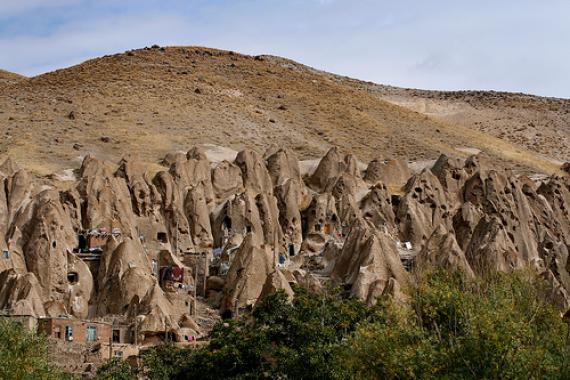Best of the Week
Introducing a new weekly feature on the blog: our favorite recent additions to the Atlas! Take a gander at this week’s créme de la créme, and add your favorite spots to the Atlas to be considered for the next “Best of the Week” feature!
Old Observatory in Tartu - Tartu, Estonia
.jpg)
(source)
Founded in 1802, the old observatory of Tartu University is Estonia’s oldest and largest astronomical observatory and a UNESCO Wold Heritage Site, yes, but it’s perhaps most famous as the first point in the Struve Geodetic Arc, a series of survey triangulations stretching more than 2,820 kilometers from the tip of Norway to the shores of the Black Sea that mark the first accurate measuring of a meridian. A scientific undertaking of colossal proportions, especially at the time (1816-1855), the Arc’s aim was to determine the exact size and shape of Earth.
Complete Atlas Obscura entry on the Old Observatory in Tartu
Passetto di Borgo - Rome, Italy
.jpg)
(source)
Open to visitors for a limited time each summer, the Passetto, an ancient escape route for the Pope that dates back, in places, to 850, is still in working order. The Vatican’s private Swiss Guard always have a key on hand and ready for the Pope in the event of an emergency. The Passetto was most famously used by Clement VII in 1527 when a rogue army of 35,000 mercenaries and soldiers descended on Rome. Finding himself on the wrong side of international land-grab politics, the Pope used the then-secret passage to escape to the heavily fortified Castel Sant’ Angelo.
Complete Atlas Obscura entry on Rome’s Passetto di Borgo
Emanuel Vigeland Museum - Oslo, Norway
.jpg)
(source)
Looking for a place to display his paintings and sculptures to the public, Emanuel Vigeland, brother to Gustav, built an unusually-shaped museum with a large barrel-vaulted room in 1926 with the intention of filling it up over the years. Today, the room is completely covered - from floor to ceiling, wall to wall - in Vigeland’s work. The multi-talented artist liked being in the building so much, he decided to stay forever. His ashes sit in an urn that rests above the main entrance to the building, which is open to the public and hosts several concerts throughout the year.
Complete Atlas Obscura entry on the Emanuel Vigeland Museum
Clutter Family Home - Holcomb, Kansas, United States
.jpg)
(source)
A man, his wife and their two children were brutally murdered by a pair of parolees looking for some quick cash in the small farming town of Holcomb, Kansas, in November 1959. The story would have quickly faded if Truman Capote, a novelist riding high after the success of “Breakfast at Tiffany’s,” hadn’t picked up a newspaper one morning and decided to make it the subject of his next book. “In Cold Blood,” which took years of research - and 8,000 pages of notes - to put together, was published to wide acclaim and hailed as a groundbreaking work of new journalism.
Complete Atlas Obscura entry on the Clutter Family Home
Troglodyte Village - Kandovan, Iran

(source)
Residents of this village in a remote northwest corner of Iran live in caves carved out of giant structures resembling those found in a termite colony that were formed by ash and debris from Mouth Sahand when the now-dormant volcano erupted sometime in the last 11,000 years. While one might assume that modern-day cave dwellers lead primitive lives, these homes are quite advanced: most feature hand-crafted porches, doors, windows and stairwells and living areas, storage areas and an animal shelter spread around between two and four stories. The caves are some of the most energy efficient homes on Earth.
Complete Atlas Obscura entry on Iran’s Troglodyte Village






Follow us on Twitter to get the latest on the world's hidden wonders.
Like us on Facebook to get the latest on the world's hidden wonders.
Follow us on Twitter Like us on Facebook